Making the nation: an exceptional album of drawings of Dutch women in regional costume
- Regular price
- €34.000,00 EUR
- Regular price
-
- Sale price
- €34.000,00 EUR
- Unit price
- per
Rossina Murray (?-?) [owner and possible author/artist].
Album comprising 28 watercolour costume designs of various figures from the Netherlands.
Netherlands [Amsterdam?], [ca. 1801].
Tall folio (48,5 x 30 cm). With 25 watercolour drawings on thick paper watermarked 'J. Ruse/ 1801', mostly interleaved with protective tissue paper, depicting Dutch people, with manuscript captions in English, French, and Dutch; with 3 more loose watercolours in the same hand but on different paper (watermarked 1797) inserted, comprising two Dutch figures similar to the other drawings and one larger Dutch winter landscape with ice sailing ships and skaters (26,5 x 38 cm).
Luxuriously bound in contemporary heavy Empire style calf mottled in colour, with geometric ornamental frieze in black and gold decorating the border of the covers. Gilt edges.
A tall, beautifully bound album containing 28 watercolour drawings of Dutch people in traditional dress - primarily women from Amsterdam but also figures from other provinces, many linked to the city’s maritime economy. Though unsigned and undated, the drawings are on paper watermarked 1801, corresponding with similar printed images found in Dutch costume books.
An important testament to the role of visual culture in shaping national identity.
On the last free endpaper before the first drawing appears the name Rossina Murray, written in the same hand as the captions beneath the drawings. These captions, in English, French, and Dutch, place the English text at the top and give it the most detail, often specifying occupations, districts, or local customs. So, while we can’t be certain she painted the images, the handwriting evidence makes it highly probable she wrote the captions herself. Beyond this, however, we know nothing more about Rossina Murray.
Around 1800, images of people in local costume were a popular subject in print products, and many publishers in Europe issued single images or images in sets. Costume books played a crucial role in shaping emerging ideas of national identity by visually assembling the people, regions, and traditions of a country into a single, unified narrative. Through vivid images of local costumes and customs, they transformed regional diversity into a symbol of collective belonging, allowing readers to imagine a shared national culture even without traveling beyond their own towns. For English readers, such albums also offered a souvenir of travel and a window onto Dutch life, satisfying the era’s growing fascination with foreign customs while combining artistic appeal with Enlightenment ideals of documenting national character.
The drawings in our album are closely related to the printed images of Netherlandish costumes that appeared in Dutch publications around 1800, though the drawings are considerably larger. In style, they are closest to those in the fashion periodical Kabinet van mode en smaak, published in eight volumes between 1791 and 1794. Some of the drawings are derived either directly or in variant form from Maaskamp’s Afbeeldingen van kleeding, zeden en gewoonten in de Bataafsche Republiek (Amsterdam, 1803–07), the first Dutch costume book covering multiple provinces, which was also published in London. The English edition suggests there was international interest in Dutch costume imagery at the time and may explain why our album includes English captions and could have been intended for an English owner. The source of information for part of the drawings and their captions seems to have come from these publications, but for many others we could not trace a source, indicating that these were firsthand designs. This leaves us with the question of who made these drawings. It must have been someone with first-hand knowledge of Dutch costume, so it seems unlikely that the album was made in England. Perhaps it was made for Rossina Murray when she visited The Netherlands? In any case, we have yet to find a more stunning example of an early Dutch costume book.
The drawings in this album include, with their English caption:
‘An Amsterdam milk woman’
‘A farmer, in the market, with a sample of hay’
‘A Friesland peasant’
‘A Friesland peasant, in the costume worn after the French came into the country’
‘The captain of a small turf boat’
‘A peasant of Saardam. North Holland. – Where Peter the Great learnt ship building’
‘A Burgomaster of Amsterdam’
‘Ship carpenter’s wife of Amsterdam, inhabiting one particular district’
‘A burgher’s daughter’
‘A fisherman’
‘The fishermans' wife’
‘A servant, coming from market’
‘From the village of Hinlopen, in North Holland – a married woman’
‘A young person, from the same villages of Hinlopen, when unmarried she is not entitled to a crown to her cap’
‘Sledge for transporting goods’
[A young boy and girl]
‘Shrimps to sell’
‘A fisherman, returning from The Hague, with vegetables in his basket, after having dispersed of his fish.’
‘A seller of herrings, seated at the corner of a street.’
‘A Roman Catholic servant. Indicated, by her black scarf’
‘A woman skinning eels.’
‘A peasant of Gelderland with samples of butter for a ships cargo’
‘A peasant of Gelderland.’
‘Husband of the foregoing peasant, returning from milking’
‘A scene from the ice; a woman selling hot milk to the skaiters.’
[Dutch winter landscape with ice sailing ships and skaters]
[Amsterdamse aanspreker(?)]
[Copy after etching by Cornelis Bega - Zittende man steekt pijp aan (RP-P-BI-763)]
Condition:
New spine and corners, covers slightly cracked or scratched in places. Minor thumbing on the foot edge of the page, very slight foxing. Otherwise in excellent condition.
Literature:
Arntz, W. J. A. "Maaskamp's Book of Costume-Prints." Quaerendo, vol. 1, no. 1, 1971, pp. 9–12.
Dellmann, Sarah. “Authentically Dutch: Images in Anthropological Discourse.” Images of Dutchness: Popular Visual Culture, Early Cinema and the Emergence of a National Cliché, Amsterdam University Press, 2018, pp. 129–87.
---. “Spectacularly Dutch: Popular Visual Media from Print to Early Cinema.” Images of Dutchness: Popular Visual Culture, Early Cinema and the Emergence of a National Cliché, Amsterdam University Press, 2018, pp. 53–93.
Koolhaas-Grosfeld, E. A. De ontdekking van de Nederlander in boeken en prenten rond 1800. Zutphen: Walburg Pers, 2010.
Landwehr. Dutch Books with Coloured Plates. No. 358.
Couldn't load pickup availability
Share
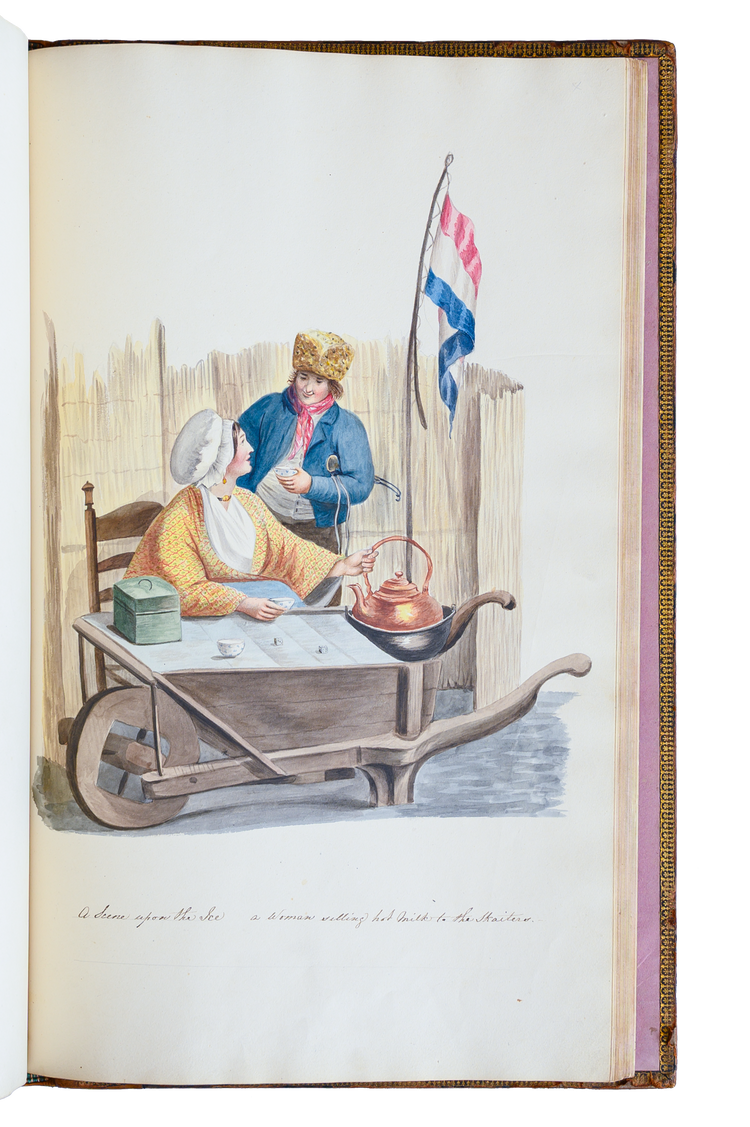
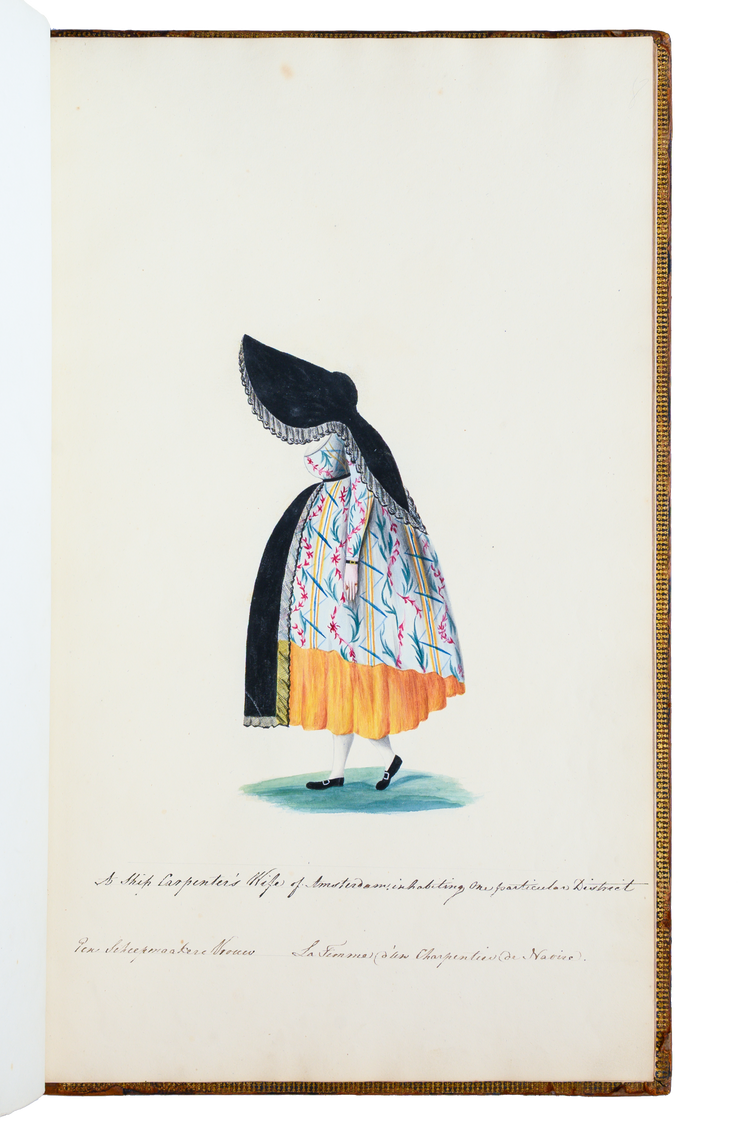
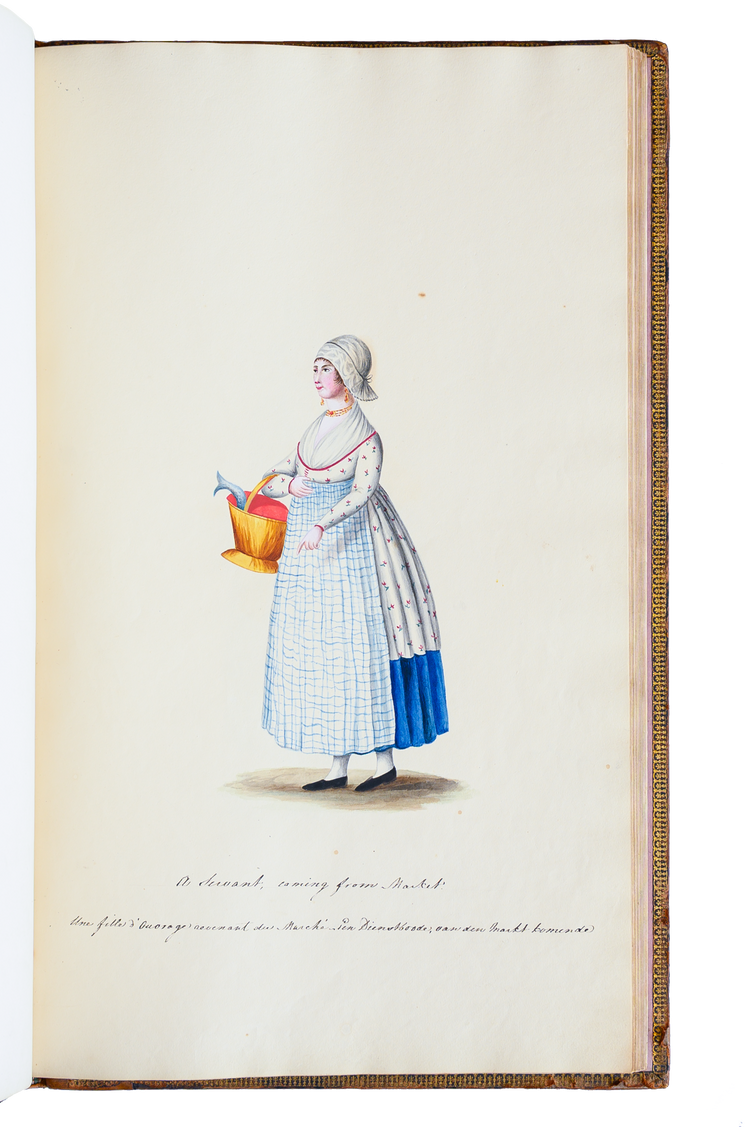
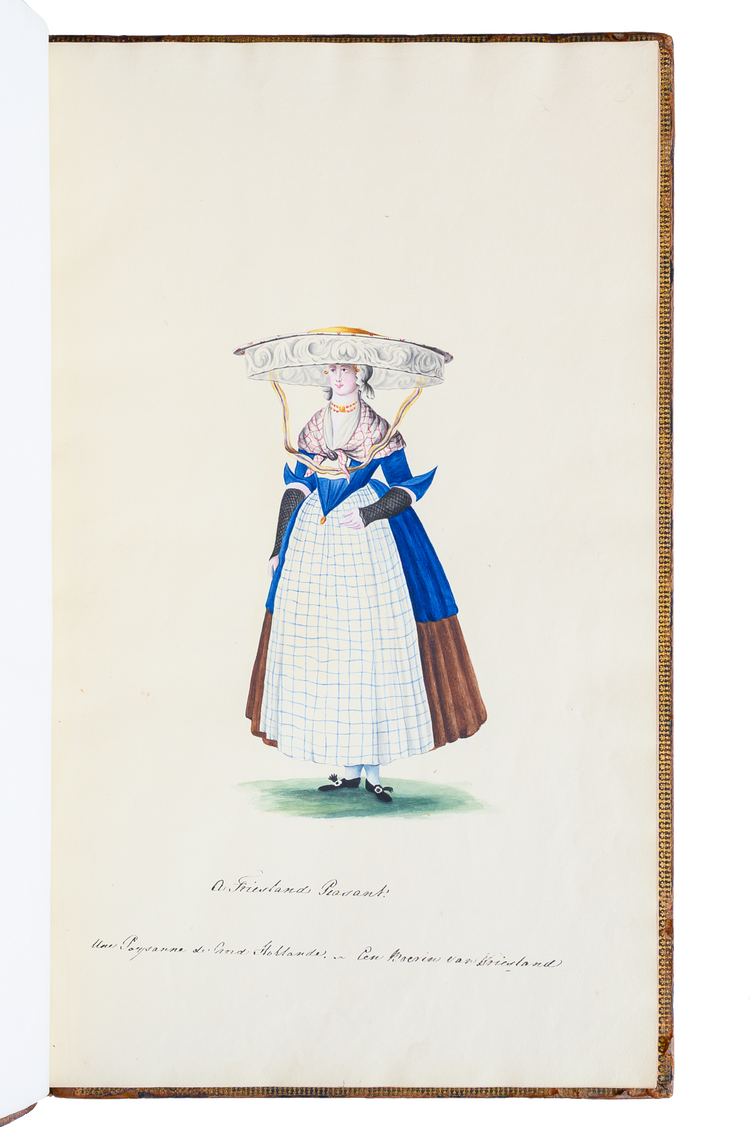
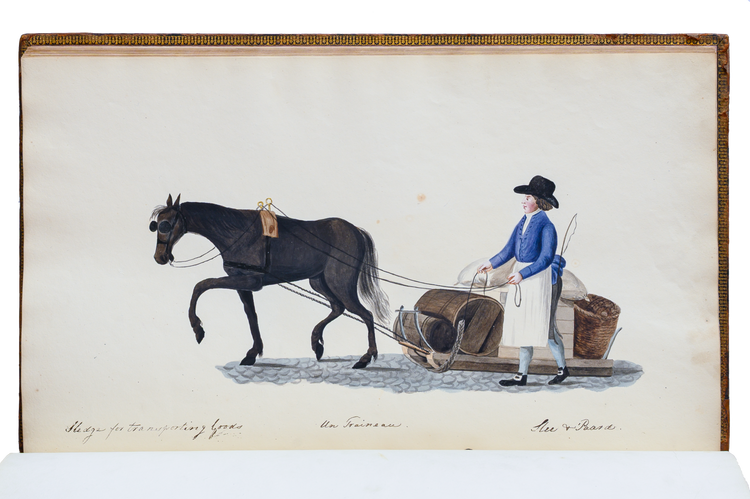
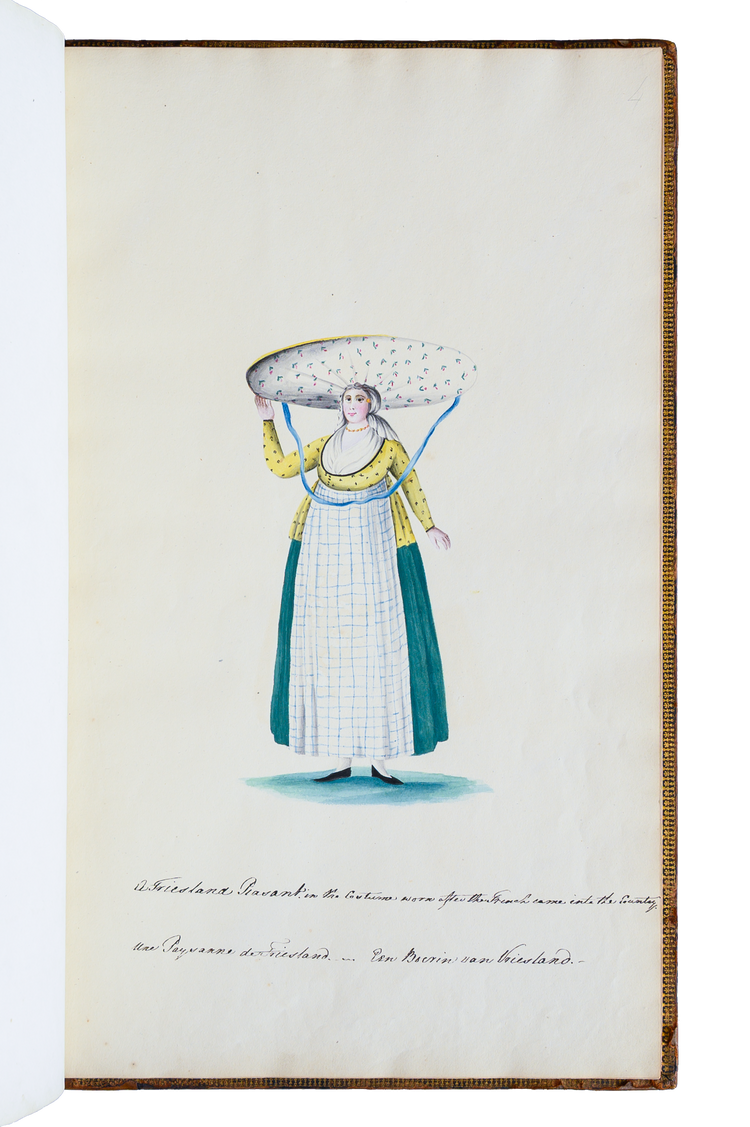
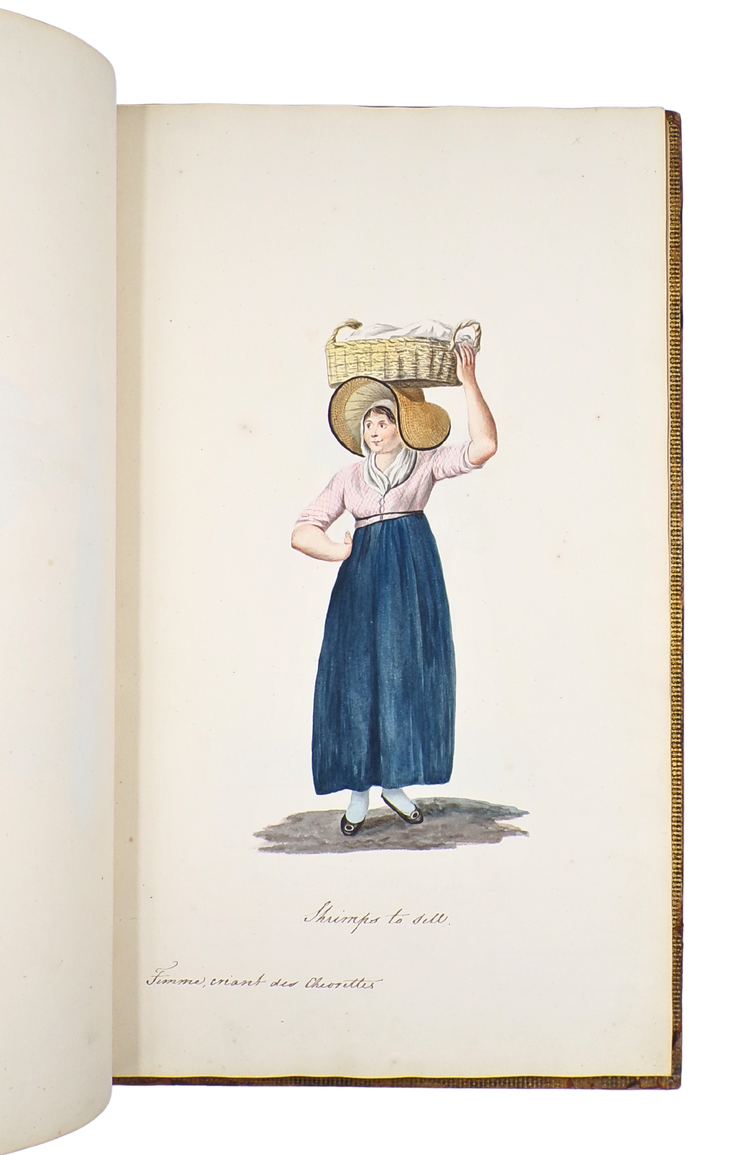
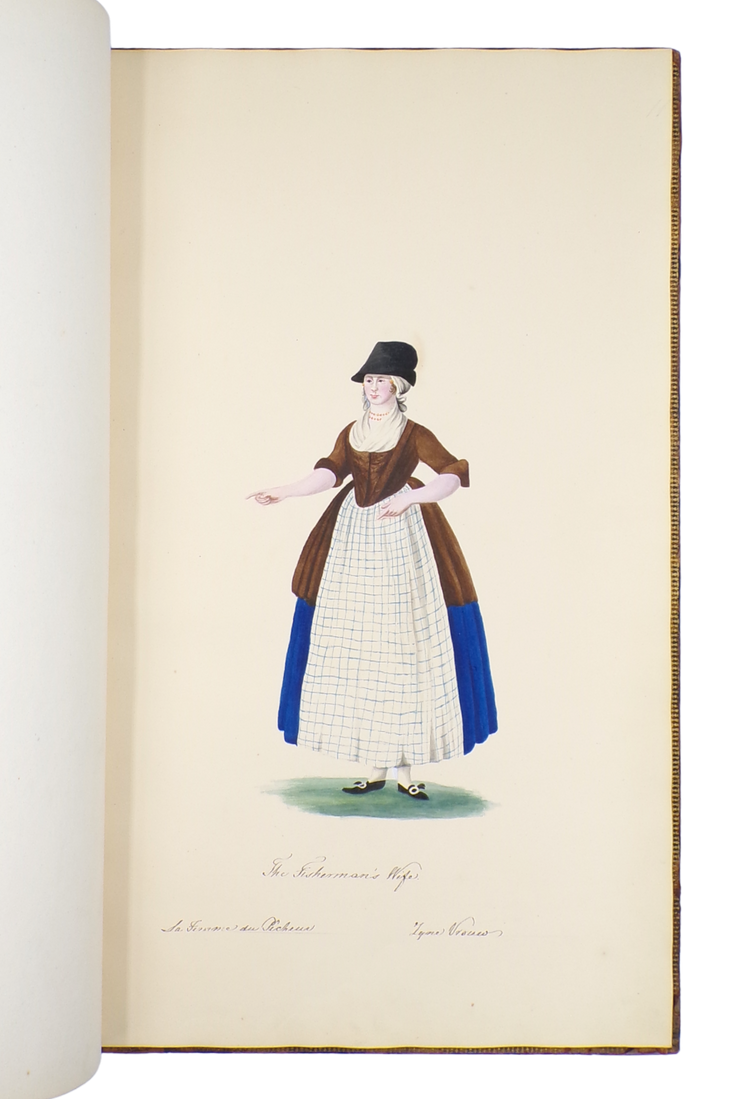
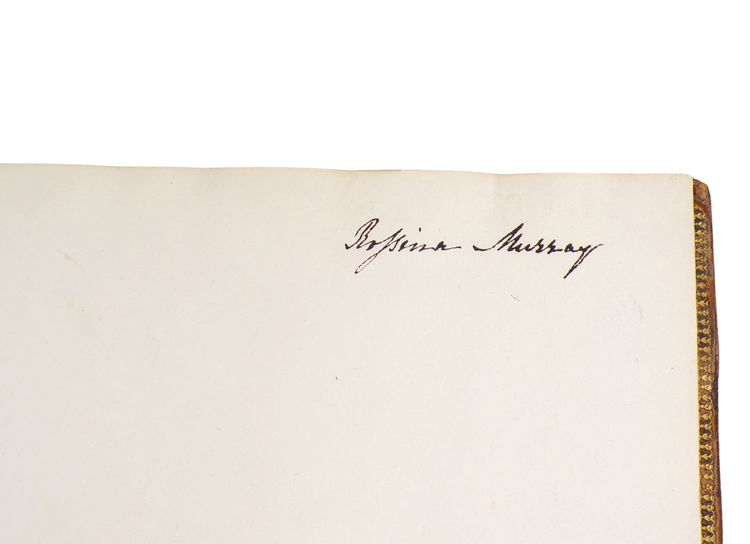
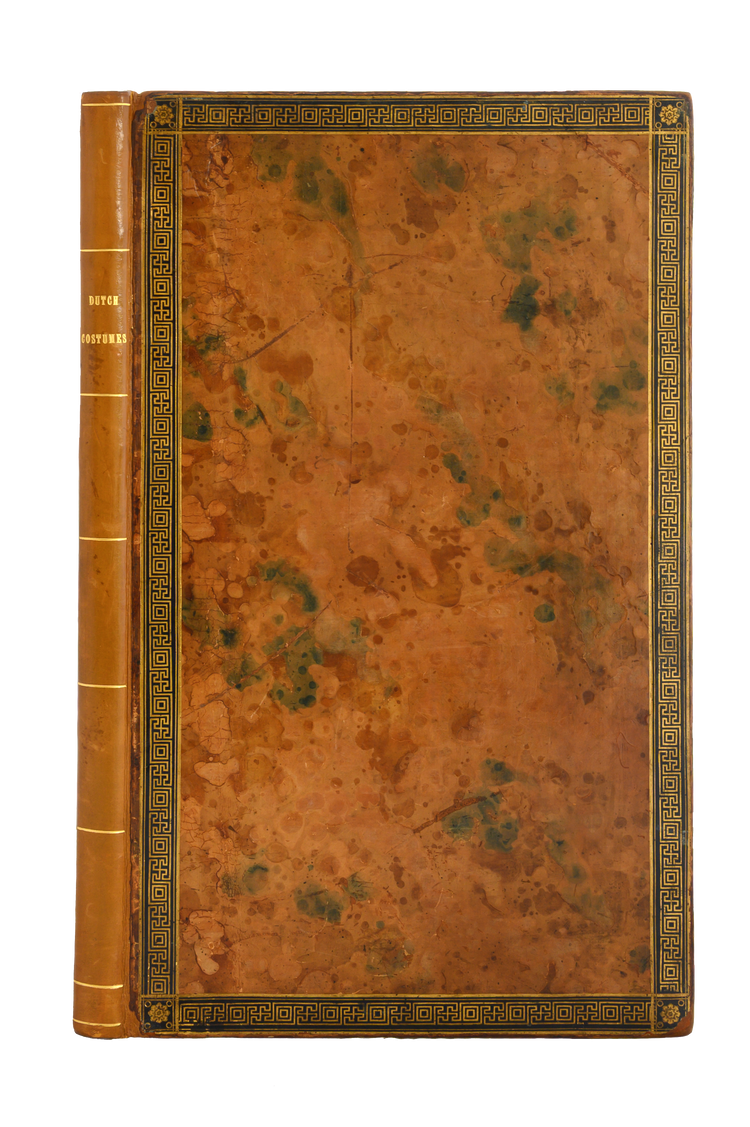
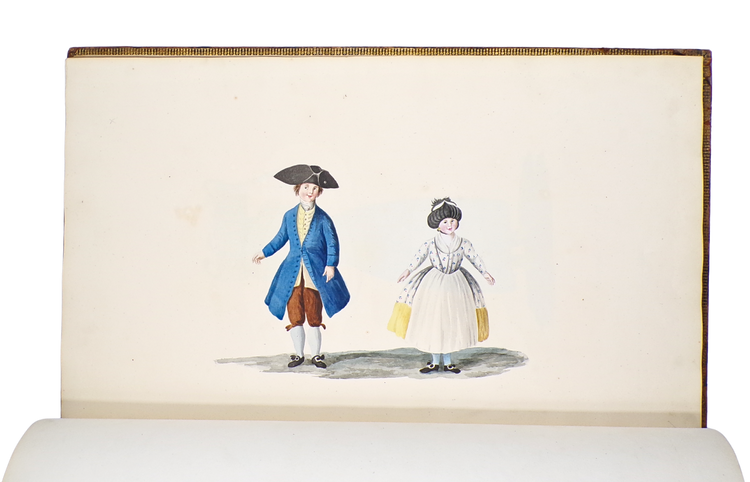
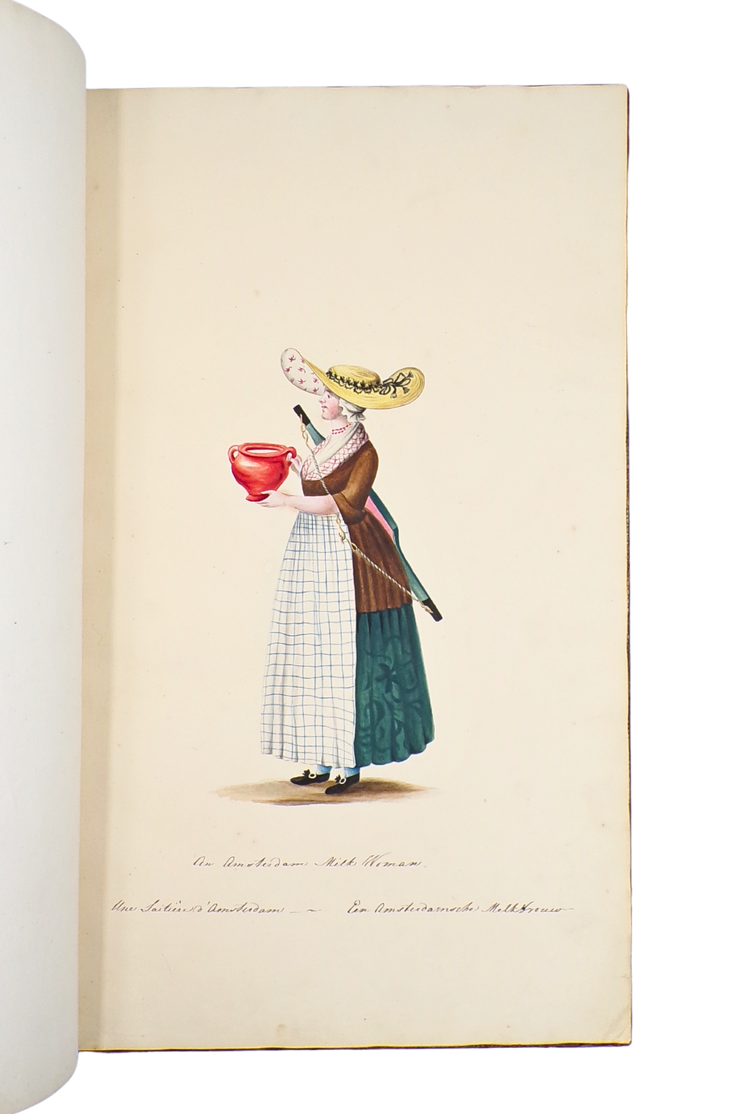
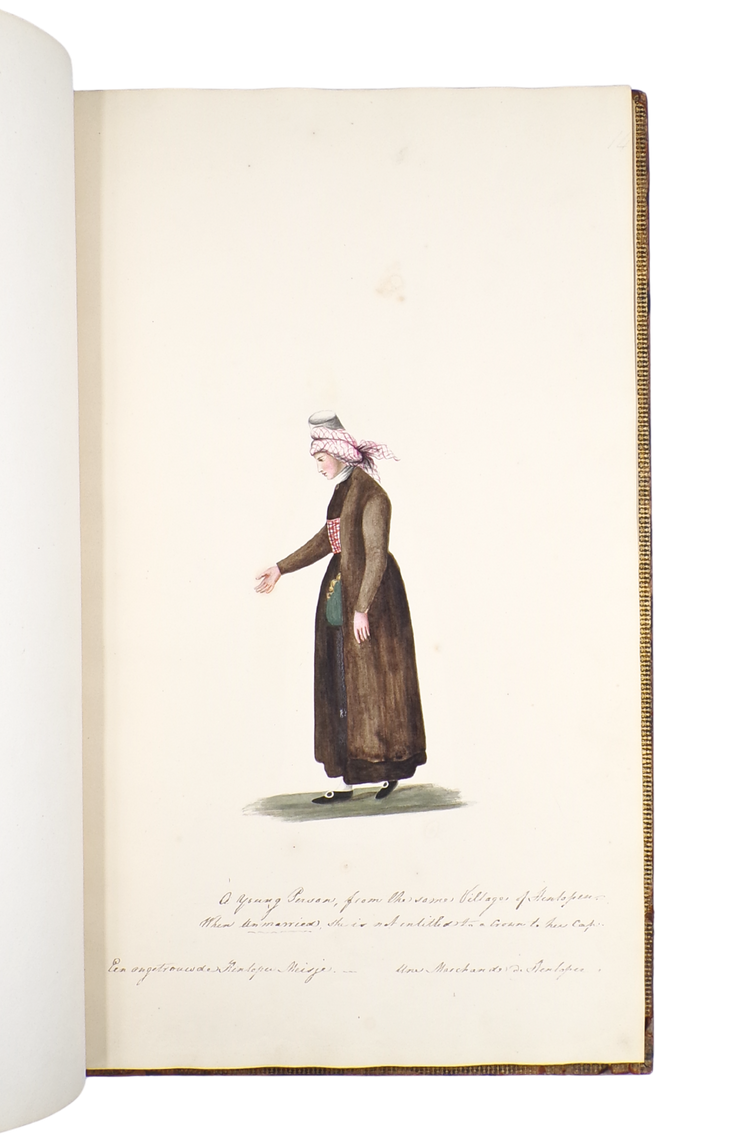
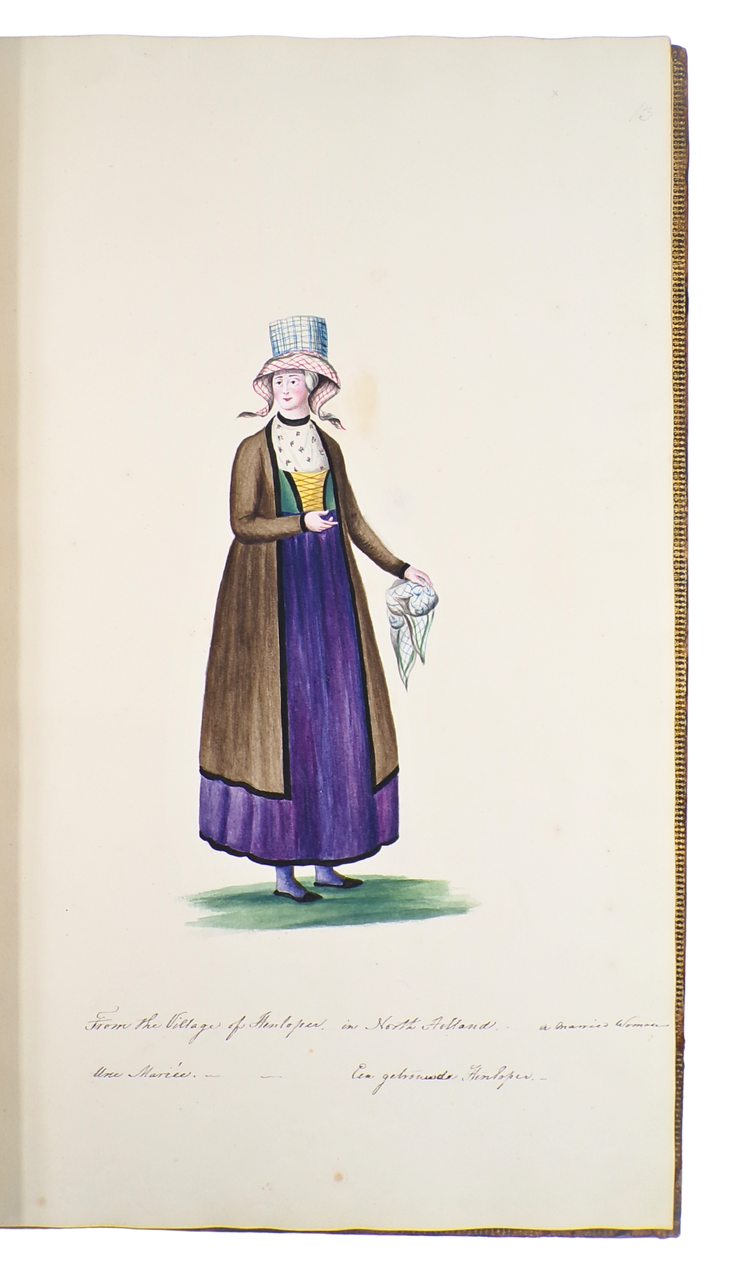
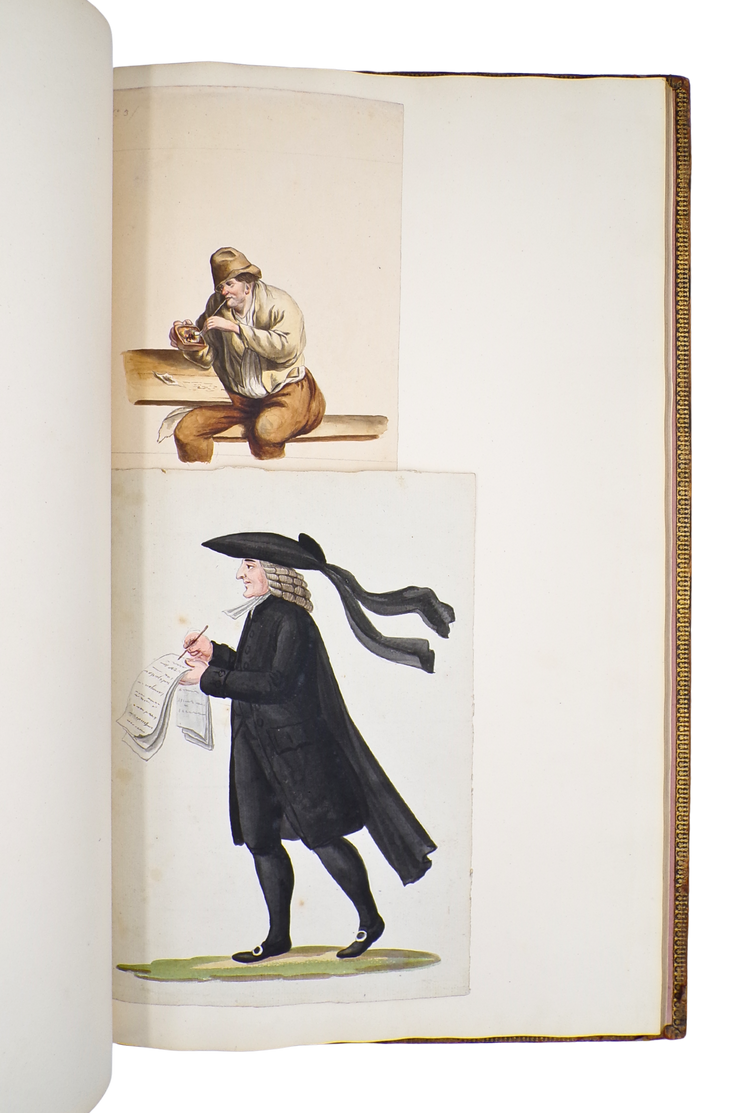
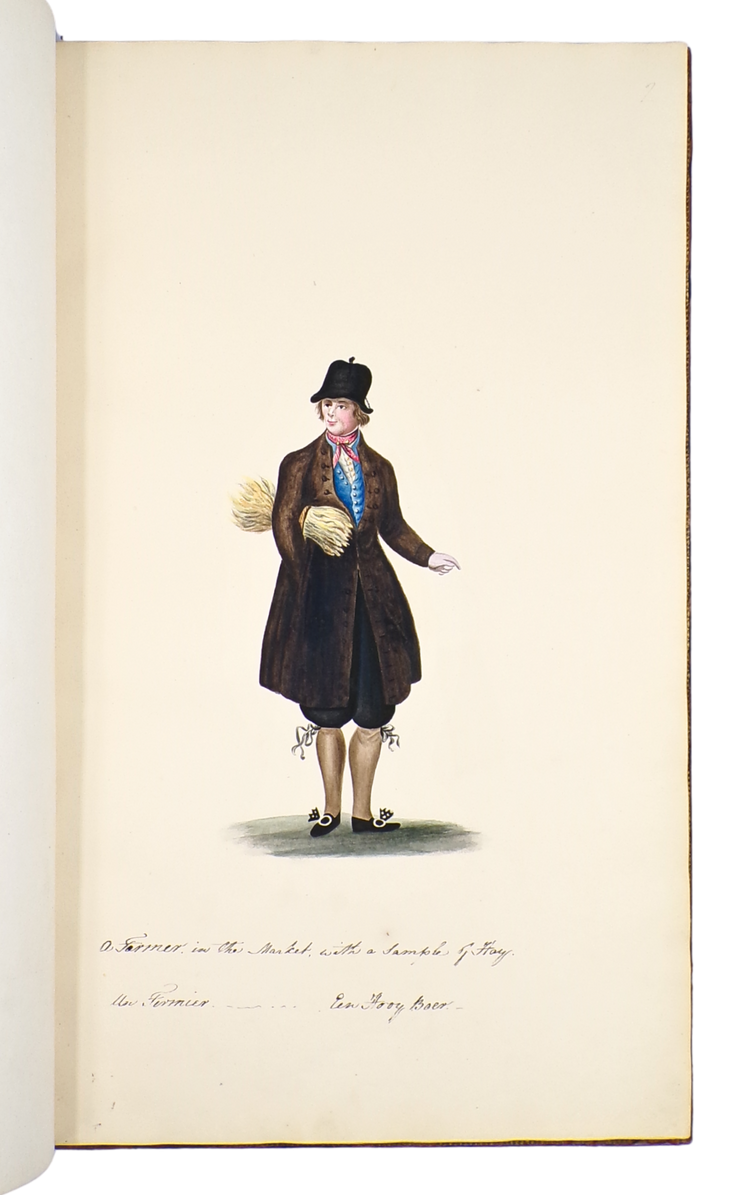
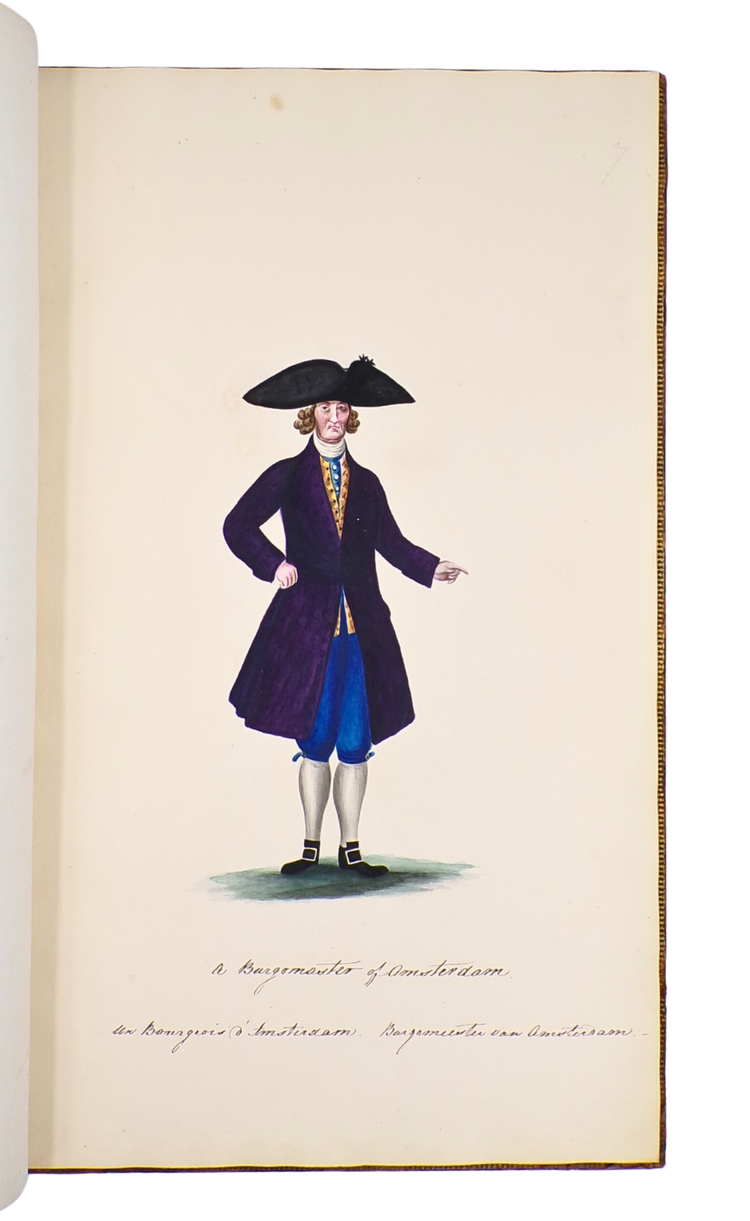
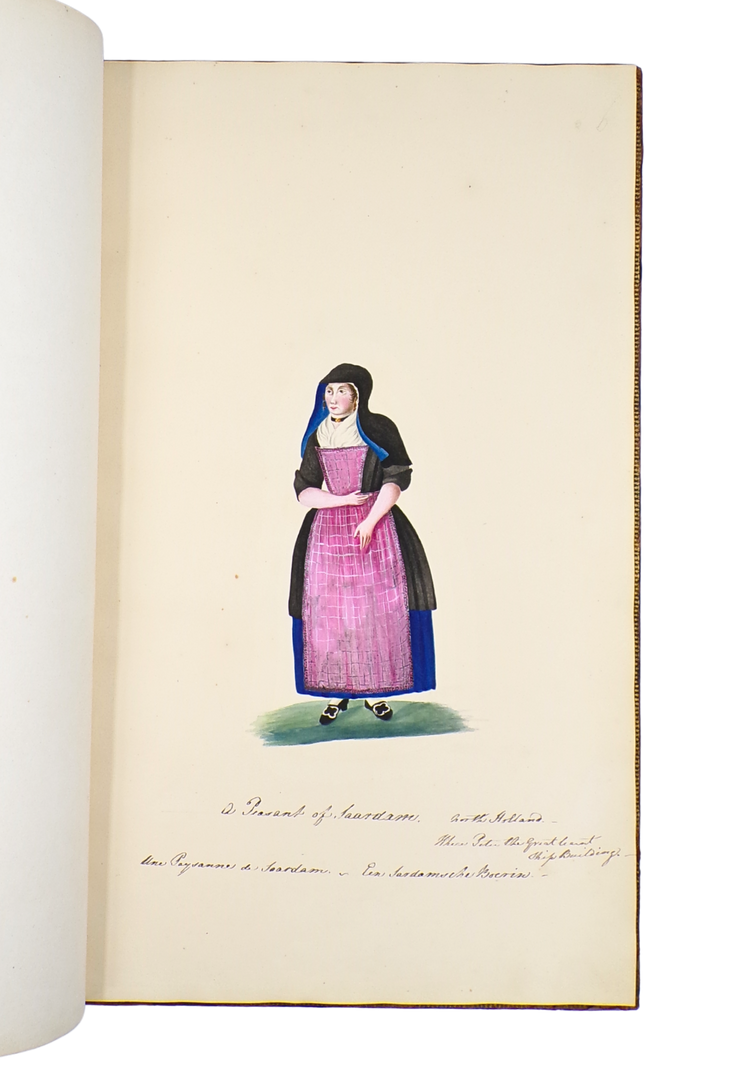
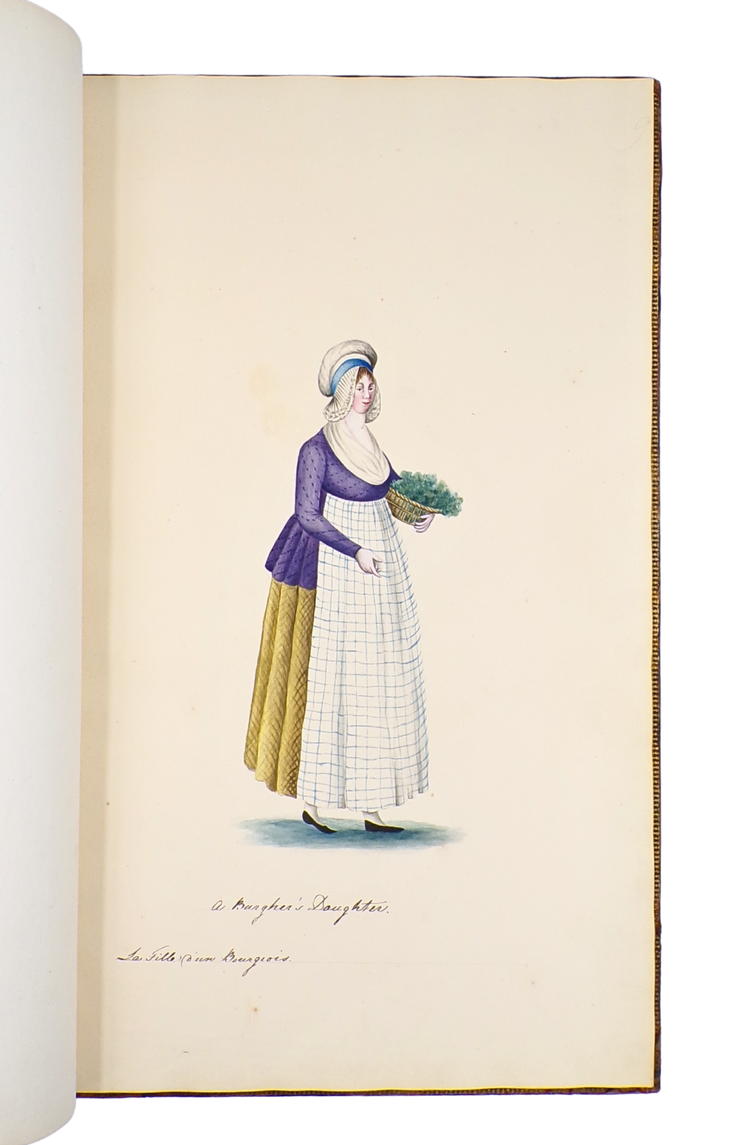
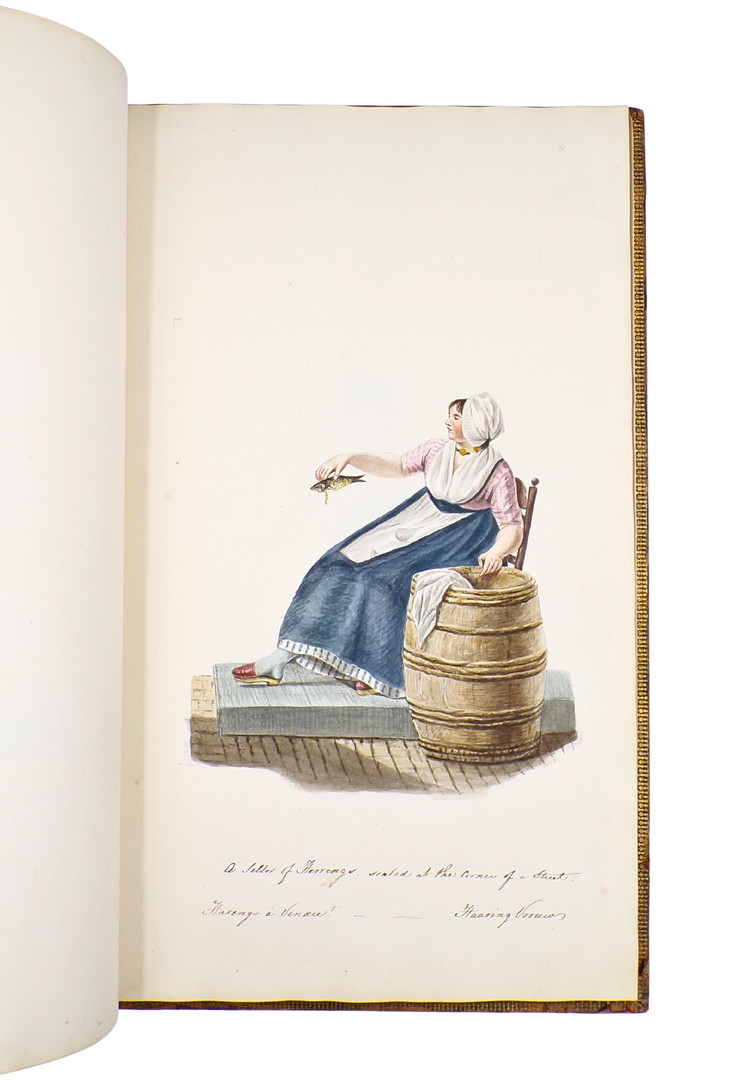
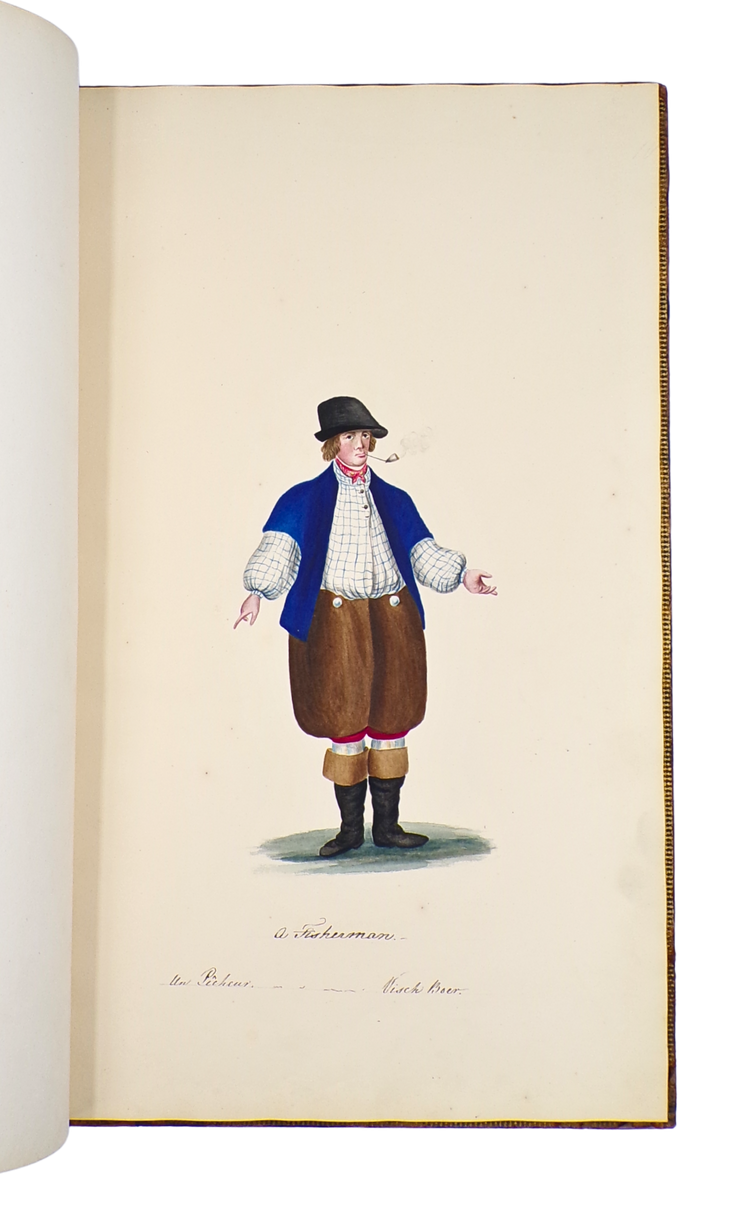
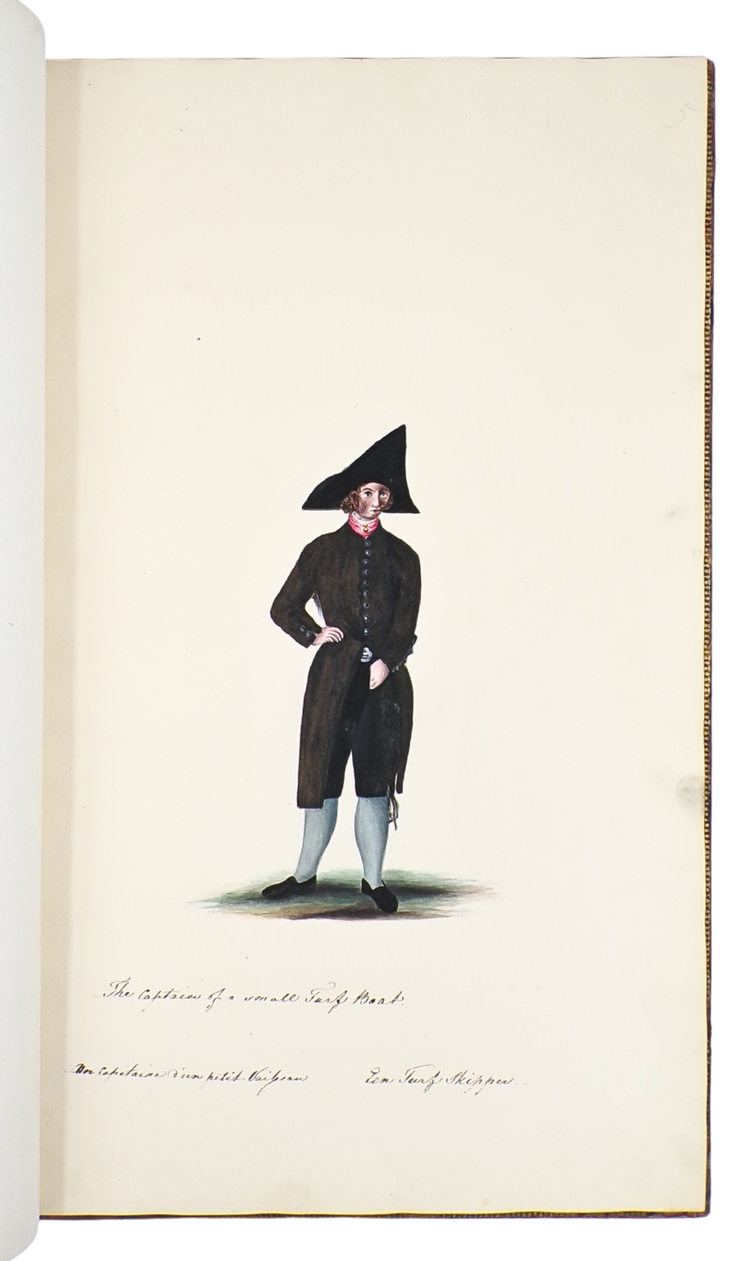
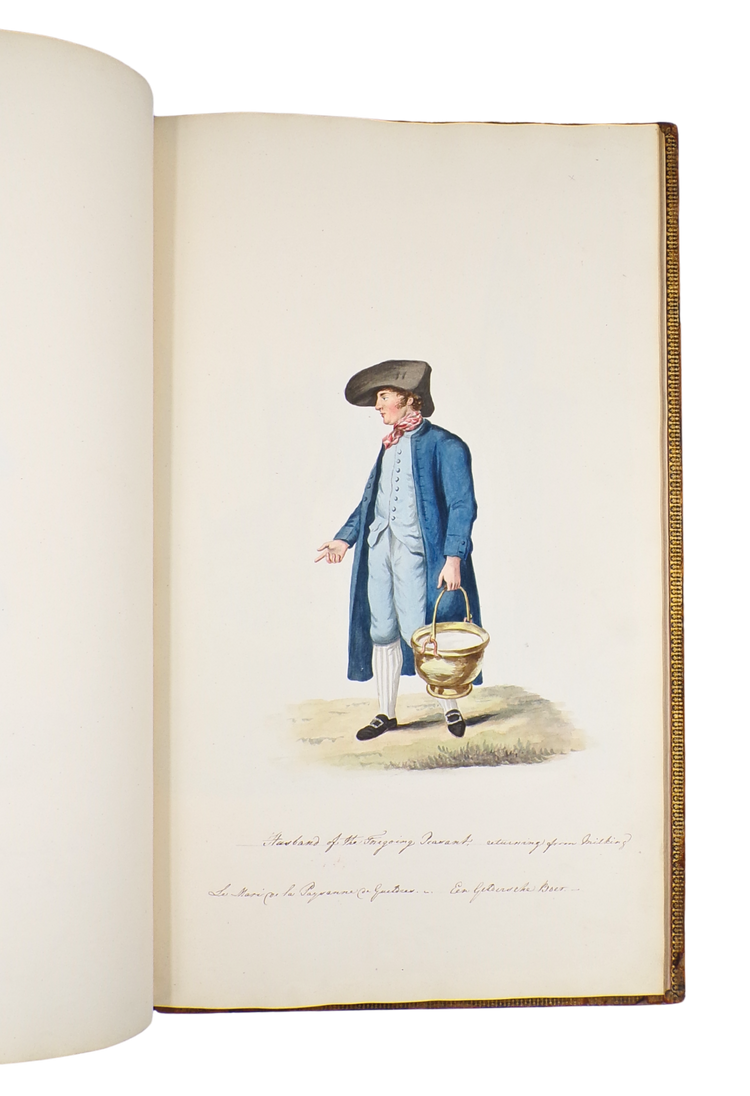
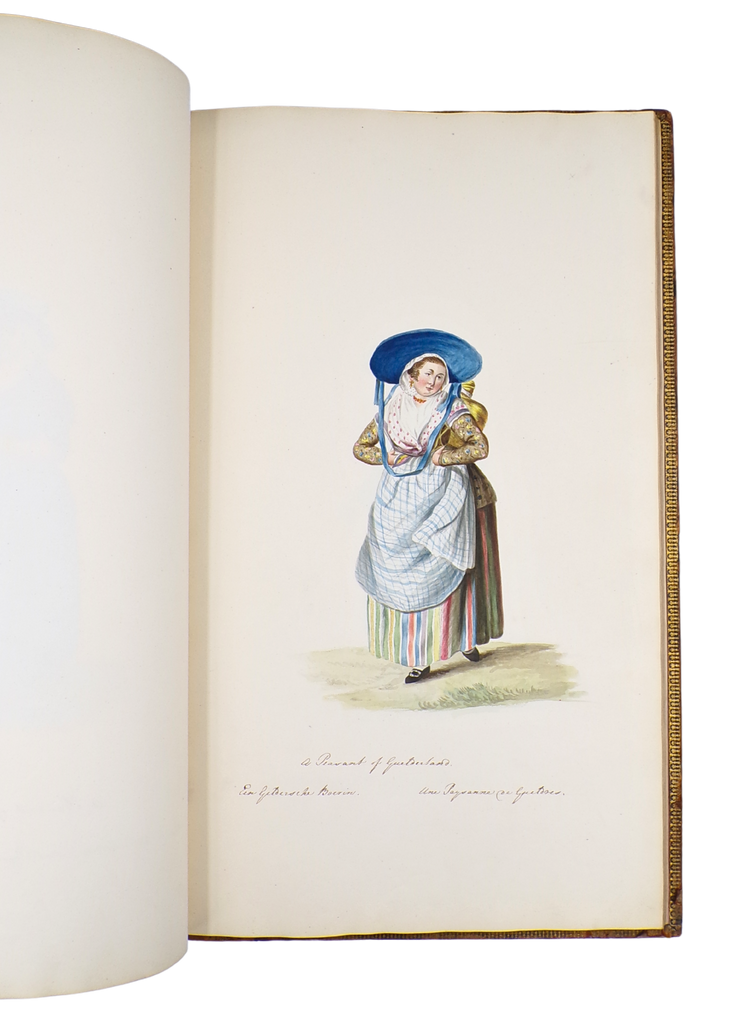
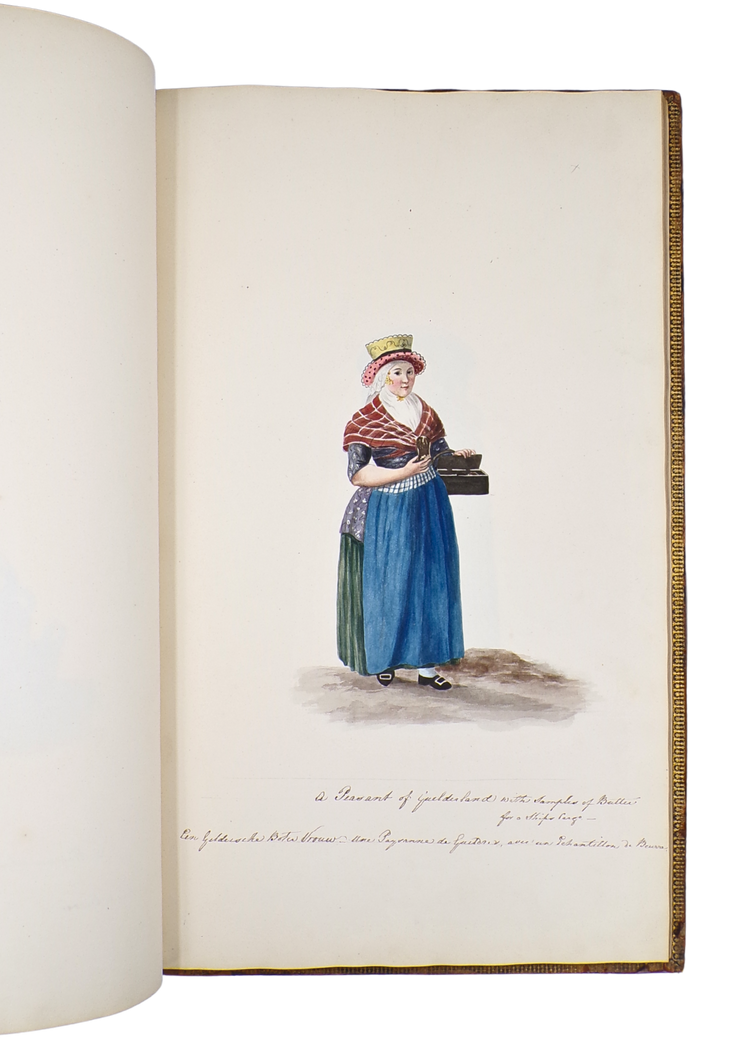
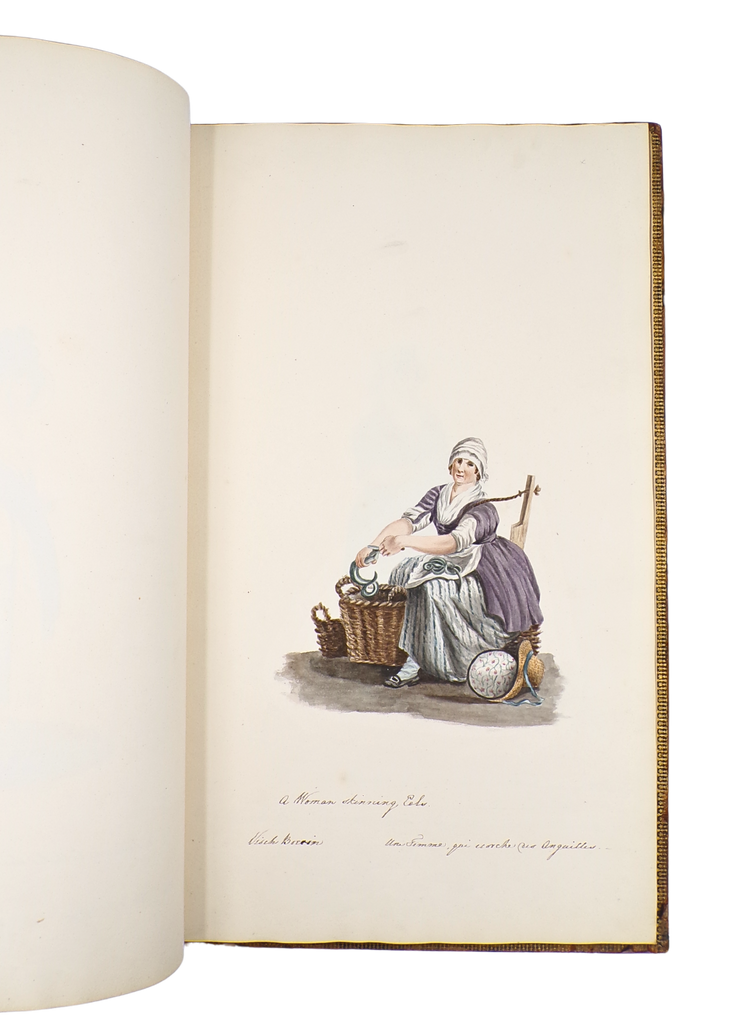
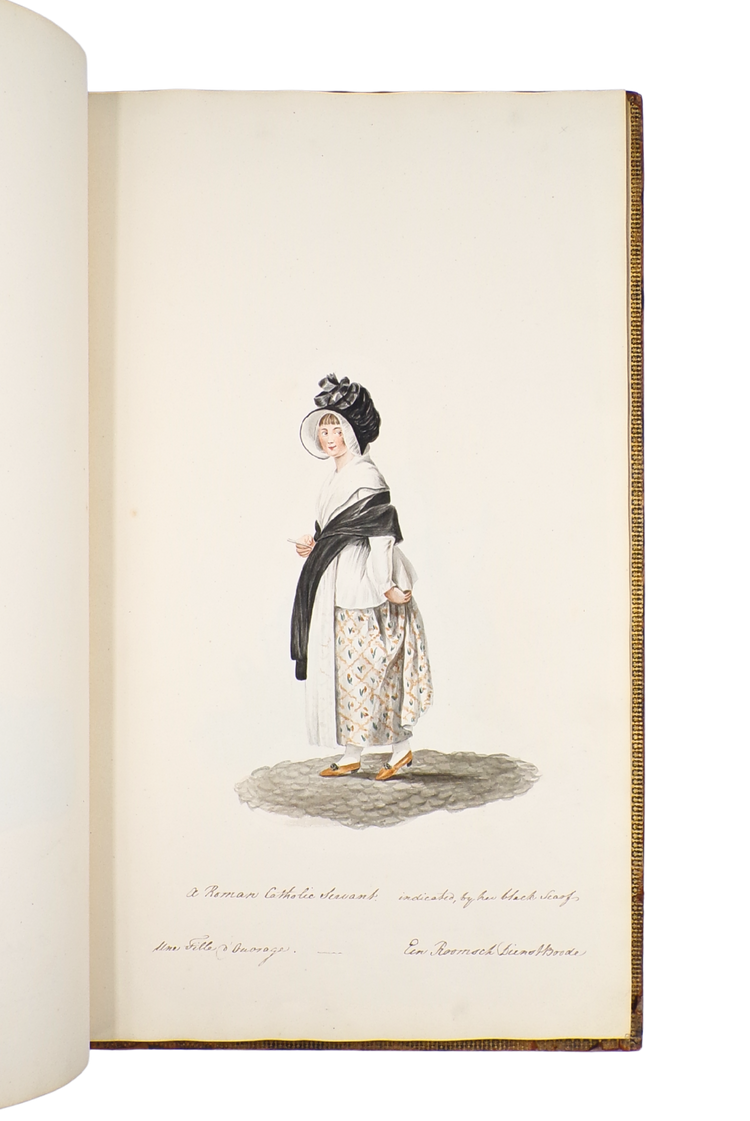
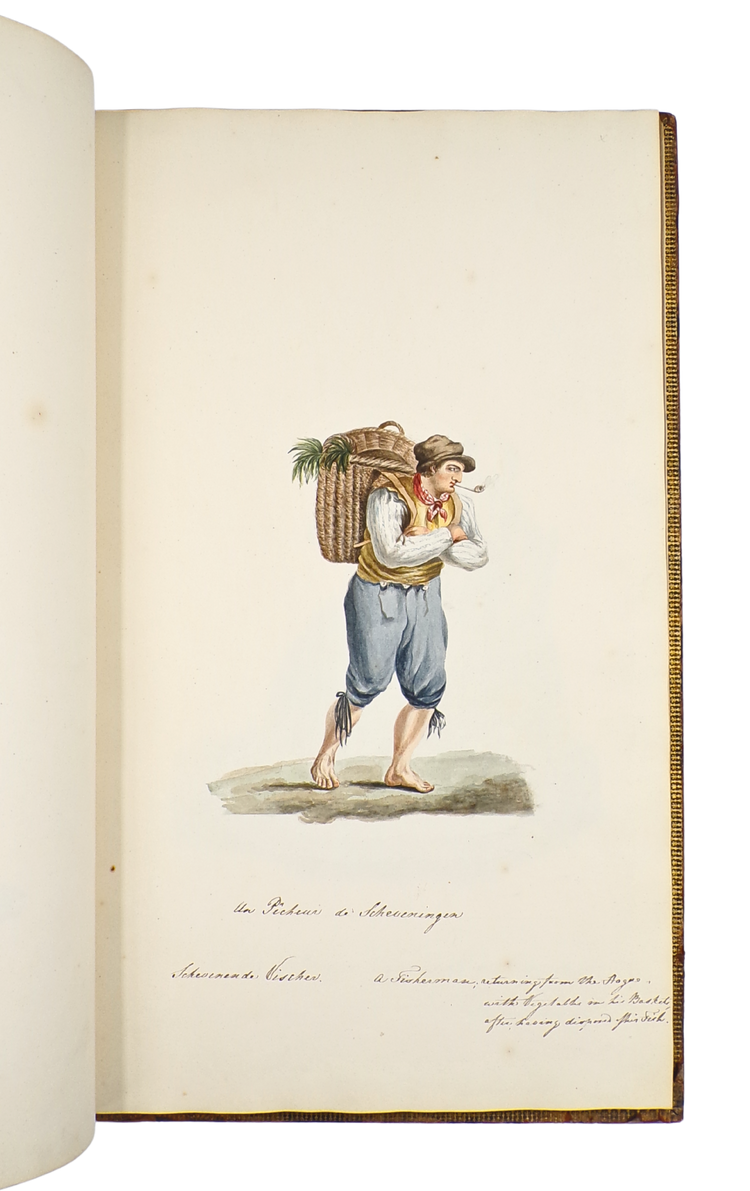
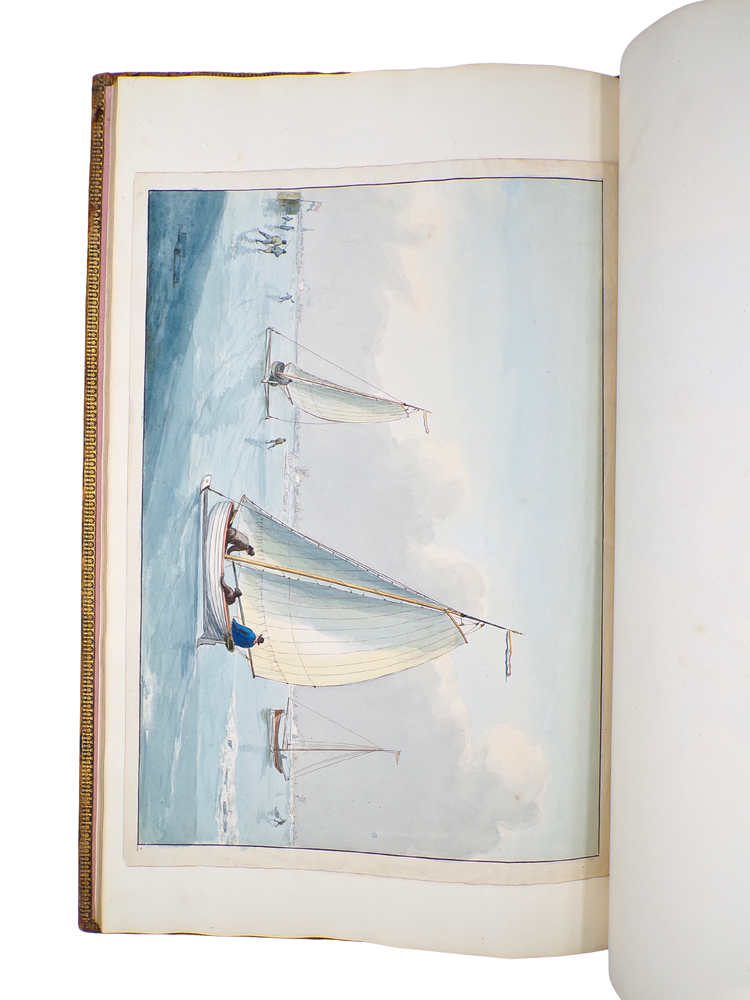
Contact
Email: hugo@artemrarebooks.com
Phone: +31651042297
Visit us on appointment at:
Former US Embassy
Lange Voorhout 102
2514EJ
The Hague (The Netherlands)
Shipping address:
Nannie van Wehlstraat 51
2548MN
The Hague
The Netherlands





























